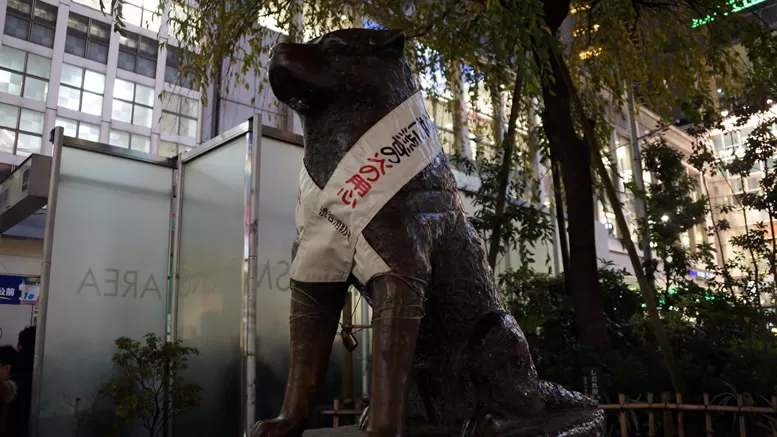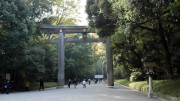One of Tokyo’s most beloved landmarks, the Hachikō Statue stands proudly outside Shibuya Station, honouring Japan’s most loyal dog. This iconic meeting spot attracts visitors from around the world, eager to learn the heartwarming tale behind the bronze Akita who waited faithfully for his owner, every day, for nearly a decade.
Hachikō’s story dates back to the 1920s, when he was adopted by Hidesaburō Ueno, a professor at the University of Tokyo. Every evening, Hachikō would patiently wait at Shibuya Station for his owner to return home from work. Tragically, in 1925, Professor Ueno passed away suddenly, never returning to meet his loyal companion. But Hachikō continued to wait at the station daily for nine more years, until his own passing in 1935.
After featuring in a newspaper, his unwavering devotion touched the hearts of the Japanese people, and Hachikō became a national symbol of loyalty and devotion. In 1934, while still alive, he was honoured with a bronze statue outside Shibuya Station—a rare tribute for an animal.
Hachikō’s Statue
Located at Shibuya’s Hachikō Exit, the statue has become one of the most popular meeting spots in the city. Whether you’re exploring Shibuya’s famous scramble crossing, shopping in its trendy streets, or just passing through, stopping by Hachikō’s Statue is a must.
The original statue was melted down during World War II, but in 1948, a new one was erected, sculpted by Takeshi Ando, the son of the original artist. Today, it remains a cherished symbol of faithfulness, often adorned with seasonal decorations like a Santa hat in December or flowers on Hachikō’s Memorial Day (March 8th).
Hachikō’s impact goes far beyond his statue. His story has been immortalised in books, films, and TV dramas, including the 2009 Hollywood film Hachi: A Dog’s Tale starring Richard Gere. In 2015, a long-awaited statue of Hachikō reuniting with his owner was unveiled at the University of Tokyo, where Professor Ueno once worked, bringing their story full circle.
Hachikō’s remains are also enshrined at Aoyama Cemetery, where he rests beside his beloved owner. A preserved version of Hachikō himself can even be seen at the National Museum of Nature and Science in Ueno.
Visiting the Hachikō Statue
The Hachikō Exit of Shibuya Station is always bustling with people and is also the best exit to visit Shibuya’s scramble crossing. Hachikō’s statue remains a quiet, sentimental spot amid the chaos of the city. Whether you visit to take a photo, pay tribute, or simply experience a piece of Tokyo’s soul, Hachikō’s story is a timeless reminder of loyalty, love, and devotion, a tale that continues to inspire, nearly a century later.





